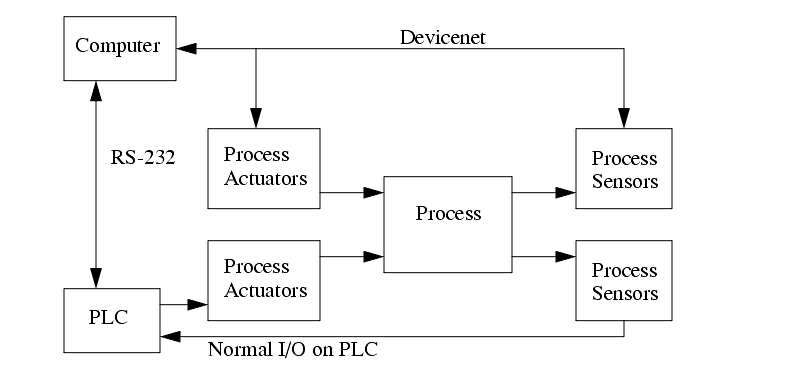27.1 INTRODUCTION
������������Multiple control systems will be used for complex processes. These control systems may be PLCs, but other controllers include robots, data terminals and computers. For these controllers to work together, they must communicate. This chapter will discuss communication techniques between computers, and how these apply to PLCs.
The simplest form of communication is a direct connection between two computers. A network will simultaneously connect a large number of computers on a network. Data can be transmitted one bit at a time in series, this is called serial communication. Data bits can also be sent in parallel. The transmission rate will often be limited to some maximum value, from a few bits per second, to billions of bits per second. The communications often have limited distances, from a few feet to thousands of miles/kilometers.
Data communications have evolved from the 1800's when telegraph machines were used to transmit simple messages using Morse code. This process was automated with teletype machines that allowed a user to type a message at one terminal, and the results would be printed on a remote terminal. Meanwhile, the telephone system began to emerge as a large network for interconnecting users. In the late 1950s Bell Telephone introduced data communication networks, and Texaco began to use remote monitoring and control to automate a polymerization plant. By the 1960s data communications and the phone system were being used together. In the late 1960s and 1970s modern data communications techniques were developed. This included the early version of the Internet, called ARPAnet. Before the 1980s the most common computer configuration was a centralized mainframe computer with remote data terminals, connected with serial data line. In the 1980s the personal computer began to displace the central computer. As a result, high speed networks are now displacing the dedicated serial connections. Serial communications and networks are both very important in modern control applications.
An example of a networked control system is shown in Figure 408. The computer and PLC are connected with an RS-232 (serial data) connection. This connection can only connect two devices. Devicenet is used by the Computer to communicate with various actuators and sensors. Devicenet can support up to 63 actuators and sensors. The PLC inputs and outputs are connected as normal to the process.
